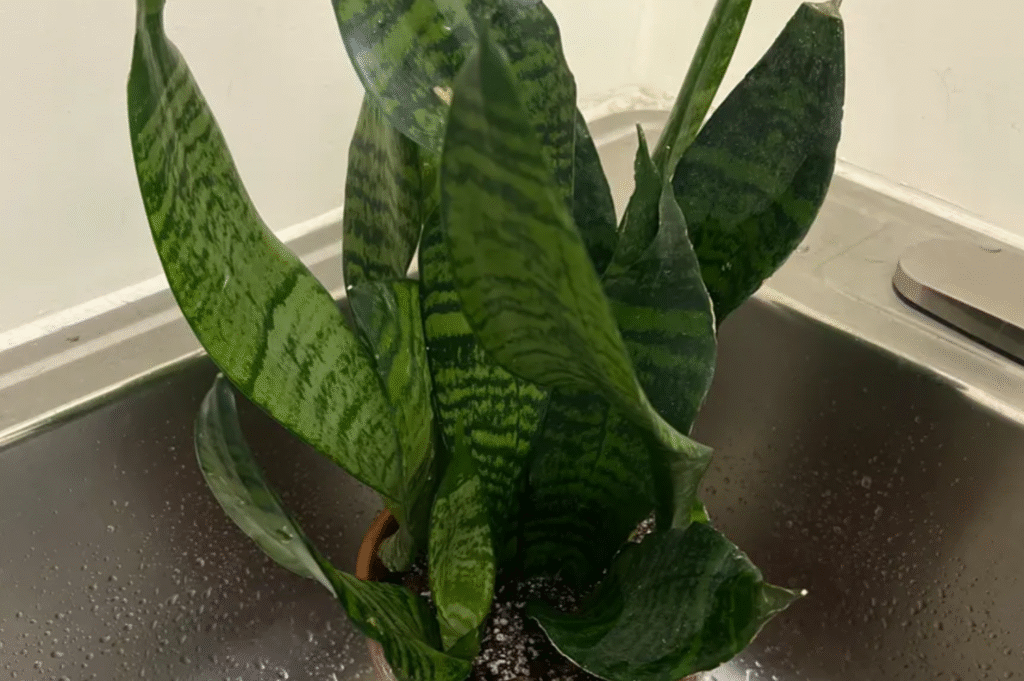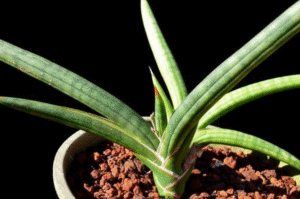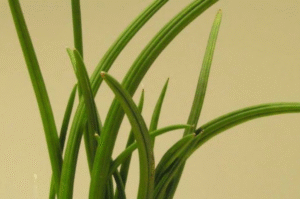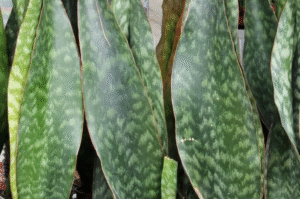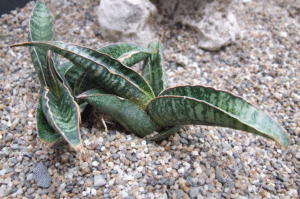If you’re seeking a houseplant that delivers both bold aesthetics and low-maintenance care, look no further than Dracaena trifasciata ‘Black Robusta’. Also known as the Black Robusta Snake Plant, this dark-leaved cultivar is a hardy and stylish addition to any indoor space. With its deep green, almost black foliage streaked with silvery hues, it offers a dramatic contrast while thriving on neglect.
In this comprehensive guide, we’ll walk you through everything you need to know to plant, grow, and care for Dracaena trifasciata ‘Black Robusta’ successfully. Whether you’re a beginner or an experienced plant parent, this article covers it all (from propagation methods to pest management).
What is Dracaena trifasciata ‘Black Robusta’?
Originally classified as Sansevieria trifasciata, the plant was reclassified under the Dracaena genus. ‘Black Robusta’ is a cultivar known for its dark, wide leaves that arch outward, giving it a full, bushy appearance.
Key features:
- Botanical Name: Dracaena trifasciata ‘Black Robusta’
- Common Name: Black Robusta Snake Plant
- Growth Habit: Upright, rosette-forming
- Height: 24–30 inches indoors
- Leaf Color: Dark green to near-black with silvery marbled streaks
- Ideal for: Bedrooms, offices, shaded patios
How to Plant ‘Black Robusta’
1. Choose the Right Pot
Select a pot with:
- Good drainage holes
- A size slightly larger than the root ball
- Material such as terracotta or ceramic (helps wick away moisture)
2. Soil Type
Use a well-draining cactus or succulent mix. You can also make your own by combining:
- 2 parts potting soil
- 1 part perlite
- 1 part coarse sand
3. Planting Steps
- Fill the pot halfway with soil mix.
- Gently remove the plant from its nursery container.
- Place it in the center and backfill around the roots.
- Press the soil gently and water lightly.
Light Requirements
Black Robusta tolerates low to bright indirect light, making it suitable for a wide range of indoor settings. However, the color is most vibrant in medium to bright indirect light.
- Avoid direct sun: Prolonged exposure may scorch the leaves.
- Low light: Growth slows, and variegation may fade slightly.
Pro tip: Rotate the plant monthly to ensure even growth.
Watering Guide
One of the biggest killers of snake plants is overwatering. Black Robusta prefers to dry out completely between waterings.
Watering Schedule:
- Spring–Summer: Every 2–3 weeks
- Fall–Winter: Every 4–6 weeks
Tips:
- Always check the top 2–3 inches of soil before watering.
- Use the “lift test”; if the pot feels light, it’s time to water.
- Bottom watering is effective for avoiding root rot.
Temperature & Humidity
- Ideal Temperature: 60–85°F (16–29°C)
- Minimum Tolerance: Down to 50°F (10°C)
- Humidity: Average indoor levels are sufficient (40–60%)
Avoid placing the plant near cold drafts, heaters, or AC vents, which can stress the plant.
Fertilizing Black Robusta
While it’s not a heavy feeder, occasional fertilization helps promote healthy growth.
Best Fertilizer Type:
- Balanced liquid houseplant fertilizer (e.g., 10-10-10 or 20-20-20)
- Frequency: Once every 4–6 weeks during the growing season (spring and summer)
- Avoid fertilizing in fall and winter.
Dilute fertilizer to half strength to avoid salt buildup in the soil.
Propagation Methods
Propagation is simple and rewarding. The three most effective methods are:
1. Leaf Cuttings (in Soil or Water)
- Cut a healthy leaf into 3–4 inch sections.
- Allow them to callus for 1–2 days.
- Plant in moist soil or place in water until roots form (3–6 weeks).
2. Division
- Best done when repotting.
- Gently separate the rhizomes with a clean knife.
- Replant in individual pots.
3. Offsets (Pups)
- Wait for new shoots to appear near the base.
- Separate when they have 2–3 leaves and roots.
Pruning & Maintenance
Routine Care:
- Wipe leaves with a damp cloth to remove dust.
- Remove any yellow or dead leaves at the base with sterilized scissors.
- Rotate the pot monthly for even exposure.
Important: Avoid misting. Snake plants don’t like extra moisture on their leaves.
Common Problems & Solutions
| Problem | Cause | Solution |
| Yellowing Leaves | Overwatering | Reduce frequency and check drainage |
| Curling Leaves | Underwatering or pest | Check soil moisture; inspect for mealybugs |
| Soft or Mushy Base | Root rot | Unpot, remove rotted roots, and repot in dry soil |
| Faded Color | Insufficient light | Move to a brighter location |
Pest & Disease Management
Although generally pest-resistant, Black Robusta can occasionally face:
Pests:
- Mealybugs
- Spider mites
- Fungus gnats
Use neem oil or insecticidal soap as a natural remedy. Make sure to isolate infested plants to prevent spread.
Diseases:
- Root rot (from overwatering)
- Leaf spot (from poor airflow or excess moisture)
Improve air circulation and water carefully to prevent problems.
Repotting Tips
Repot every 2–3 years, or when the plant becomes root-bound.
Signs it’s time to repot:
- Roots are growing out of drainage holes.
- Water drains too quickly.
- Soil becomes compacted.
Choose a pot 1–2 inches wider than the current one and refresh the soil completely.
Benefits of Black Robusta Snake Plant
- Air Purification: NASA research confirms snake plants filter toxins like formaldehyde and benzene.
- Low Maintenance: Survives on minimal care and light.
- Aesthetic Appeal: Its dramatic foliage adds structure and contrast to modern interiors.
- Pet Safety Note: Toxic if ingested by cats or dogs. Keep out of reach.
Final Thoughts
Dracaena trifasciata ‘Black Robusta’ is more than just a houseplant; it’s a statement piece. Whether you’re looking for a beginner-friendly plant or an architectural element for your decor, Black Robusta checks all the boxes. With proper planting, minimal watering, and the right lighting, it will thrive with ease and elegance. If you’re ready to add a low-maintenance showstopper to your home or office, Black Robusta is worth every inch of space it occupies.

